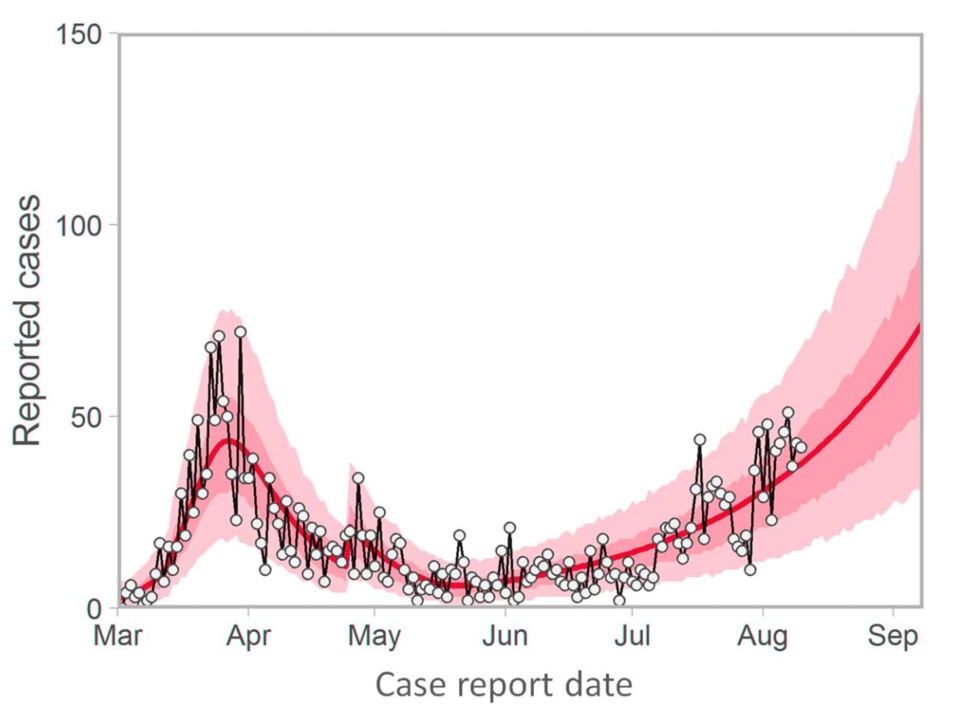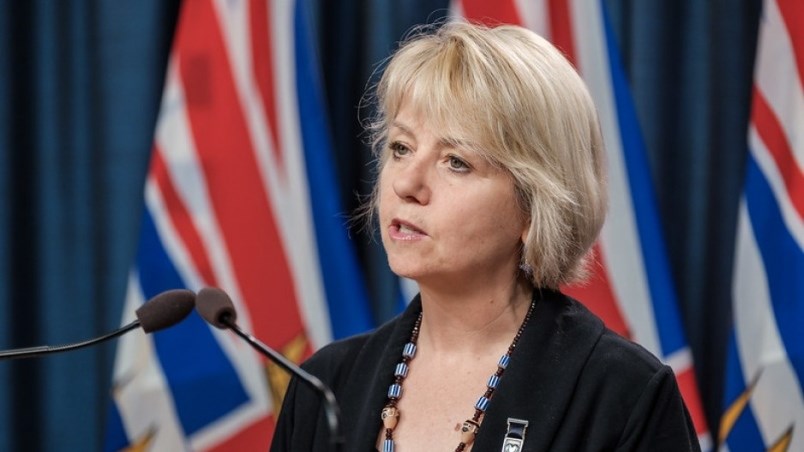New modelling by B.C.’s public health agency suggests the number of new daily COVID-19 cases could soar to levels higher than their peak in April.
Based on the assumption that the trends in current caseloads continue, the province could see caseloads upwards of 100 per day come September.
Yet, as Provincial Health Officer Dr. Bonnie Henry has noted, models aren’t forecasts and new cases depend on a collection of individual behaviours and no small dose of chance encounters.
On Wednesday, the province announced it would be hiring another 500 contact tracers across B.C. Their role in tracking down new cases and severing transmission chains has proved to be a key buffer against the renewed growth in cases, said Dr. Henry.
“We are at the point right now that we not only find everybody but that we do it in a timely way,” she said.
Still, Dr. Henry announced another 78 cases Thursday, Aug. 13, bringing the total active cases in the province up to 578, the highest total since May 8. Since July 30, the number of active COVID-19 cases has increased with every update from health officials.

The bulk of those cases are now in Metro Vancouver, including at least two recent links to Coquitlam bars. But as the bulk of transmissions shifts to a younger demographic, deaths have plummeted, with only one fatality attributed to COVID-19 in August so far.
In the lab, Dr. Henry said the province is continuing to build up its testing capacity as we move into the fall. Turnaround time now sits at about a day, and over the last 24 hours, the province has completed roughly 3,800 tests.
As the province moves closer to a Sept. 10 school start date, the BC Centre for Disease Control’s COVID-19 modelling appeared to back the message that children are less susceptible to falling ill from the virus.
Of the roughly 468,000 children under 10-year-old in B.C., 78 have tested positive for the coronavirus. That represents only 2% of all COVID-19 cases, even though the group represents 9% of all people in the province.
Another 162 young people aged 10 to 19 have reportedly fallen ill with the virus. In a population of about 507,000 people, representing 10% of B.C.’s population, that accounts for only 4% of all cases.
“The percentage of children who get ill and who get this virus is still much less than their respective proportion in the population,” said Dr. Henry in response to a reporter’s question Thursday regarding reports of a 40% increase in the number of cases among children in the U.S.
“It does not surprise me. It concerns me immensely,” she said, adding that transmission in school settings is a reflection of caseloads in a community.
If active cases remain high, exposure to the virus is likely to occur at some point in B.C. schools, and under the worst-case scenario, a learning group of 60 or 120 will have to self-isolate.
“We have to have some flexibility in case something like that happens,” she said.



